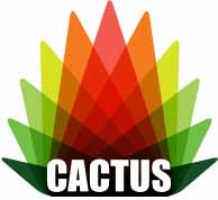
A community television advocate is calling on the CRTC to reject a May application by Rogers to broaden certain broadcast regions to meet its local programming obligations, alleging the result will subvert community programming.
Rogers wants to broaden into four large zones – Vancouver Island, British Columbia; Southern Interior, British Columbia; Central Saskatchewan and Southern Manitoba – the areas that it must serve with community and local programs for the purpose, it said, of avoiding having to use repeat programming to meet its community and local TV obligations. It said this must be done because of the tough financial environment.
Rogers said six of the 24 systems inside these zones have had difficulty meeting the CRTC’s Community TV policy’s local and access requirements, which mandate 60 per cent of a community channel’s weekly schedule be local programming, with 50 per cent being access programming. The other 18, Rogers said, have been getting by via reruns.
But the Canadian Association of Community Television Users and Stations (CACTUS) alleges in response that Rogers is attempting to bring into compliance what Shaw, its recent acquisition, has skirted with the Spotlight Channels.
“Shaw has been noncompliant with its local and access exhibition requirements for years,” CACTUS’s application alleges. “Shaw had not met the 60% local exhibition requirement for community content within each of its unique systems, nor had it met the requirement that 50% of the content exhibited should be created by local people: ‘access content.’”
“Rogers—instead of seeking to address these deficits, is seeking with this application to bring these non-compliant systems into compliance by changing the rules for itself: Zoning will allow Rogers to lower these standards by regionalizing the content (as it has done in all its other systems) and meet the policy and regulations by using the same minimal amount of ‘local’ and ‘access’ content across larger and larger regions,” the response continues.
CACTUS said it had requested – in its opposition to Rogers’s purchase of Shaw – that if the cable giant couldn’t bring Shaw’s systems into compliance after a merger, then it should create a Community-Access Media Fund to ensure local and community television is consistently funded.
The organization is now renewing calls for that fund to be created.
“Today, we need independent community media to fill the gaps left in the wake of [vertically integrated] companies that have retreated to their headquarters in big cities, and then seek to re-export one brand across the nation as Rogers is seeking to do with its current application,” CACTUS said in its response. “Robust community and independent media is the antidote.”
The organization said last week that it was “very disappointed” the CRTC excluded community TV from the base contribution it will force online streamers to pay into the system. It reiterated that disappointment in its response to Rogers’s application.
Rogers said while the zone proposal includes some broader programming still pertinent to the communities in the zone, it is also committed to providing hyper local programming to specific communities. It also said it is committed to access programming for the full 50 per cent, despite exemptions in the zone that would reduce that requirement.
Rogers says the Spotlight Channels in question have experienced challenges, including a declining subscriber base from changing viewer habits; reduced demand for the broadcaster’s linear channels when other platforms are available; and changes to the Community TV policy, which forced broadcasters to shift funding to local news, leading to a reduction in money available for community TV operations.
The cable company points to the decline of Shaw’s broadcast subscriber over the last decade, from a little more than two million subscribers in 2013 to a little more than one million in 2023, a decline of about 44 per cent. That decline, it said, corresponded to a reduction in the contributions available to fund the operation of the Spotlight Channels.



